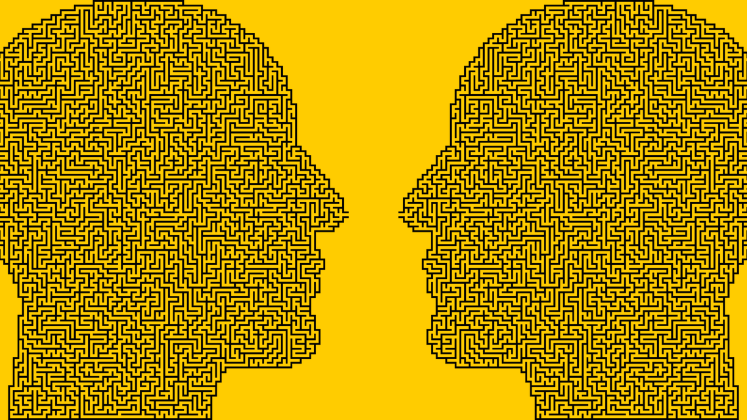In Politics and Expertise: How to Use Science in a Democratic Society, Zeynep Pamuk reimagines the relationship between democratic politics and scientific expertise, exploring the possibility of new political institutions that would make experts more accountable to the lay public. In a post-COVID world where contestation of both science and public institutions is on the rise, Pamuk’s book will remain a central point of reference for institutional theorists in the years to come, writes Mikołaj Szafrański.
This review originally appeared on LSE Review of Books. If you would like to contribute to the series, please contact the managing editor of LSE Review of Books, Dr Rosemary Deller, at lsereviewofbooks@lse.ac.uk.
Politics and Expertise: How to Use Science in a Democratic Society. Zeynep Pamuk. Princeton University Press. 2021.
 Zeynep Pamuk’s Politics and Expertise entertains the ambition of re-imagining the relationship between democratic politics and scientific expertise. The book makes central the quest for new political institutions that would make experts more accountable to the lay public.
Zeynep Pamuk’s Politics and Expertise entertains the ambition of re-imagining the relationship between democratic politics and scientific expertise. The book makes central the quest for new political institutions that would make experts more accountable to the lay public.
In the conventional understanding, science speaks truth to power. Rational decision-makers turn to science to seek certain solutions to complex social problems. Pamuk is interested in debunking such normative assumptions and proposes more complex ways of understanding how science relates to politics. In the first chapter of the book, she stipulates that uncertainty, incompleteness and fallibility are central to questions about the political use of scientific claims (11). The book examines a whole host of issues exposing the structural tensions in the relationship between politics and expertise, ranging from scientific advisory committees, public funding of science, to bans on certain forms of scientific inquiry. In a final chapter, Pamuk offers a snapshot of how all of the above problems triangulated in one particular event: the COVID-19 pandemic.
At the heart of Pamuk’s proposal to ‘strike the proper balance between scientific and democratic authority’ (11) is the call for the creation of a ‘science court’. The author puts herself in conversation with Arthur Kantrowitz, a US physicist who advocated for such an institution in the 1960s and 1970s. Pamuk contends that an adversarial institution, consisting of a citizen jury interrogating experts, would be an ideal setting for ‘examining the grounds of competing claims and revealing questionable assumptions and errors’ (115). The science court would hear petitions lodged by citizens on matters of ‘policy questions with a significant component of scientific knowledge’ (112). These questions would optimally be phrased as presupposing a yes or no answer: for example, ‘Should the government impose a national lockdown to slow the spread of COVID-19?’ (113).
Pamuk advances a set of claims to justify the use of a citizen jury. First, they are ‘an expression of popular sovereignty’. Second, they ‘inject local knowledge and community values into legal procedures’. Third, ‘it gives the ordinary citizens the opportunity to understand the workings of the legal system’ (117). Anticipating the criticism that a lay jury would potentially lack competence to examine scientific questions, the author brings in evidence suggesting that in the majority of cases, judges would reach the same verdict as the jury. The key study that Pamuk is relying on is the study of US jury trials conducted by Harry Kalven and Hans Zeisel in the 1950s and 1960s.
However, transposing the results of such studies to the context of modern trials of science is not free from problems. First, it overlooks the question of the composition of juries (and judicial benches) and presupposes a continuity between the selection of jurors in the 1950s and in the 2020s. Taking the matter of representation seriously, one needs to ask whether Kalven and Zeisel would have reached the same conclusions with regards to juries selected to mitigate accusations of class, gender and racial bias.
Second, it assumes that findings related to jury trials of individuals can be extrapolated to jury trials issuing advisory opinions over matters affecting more than a single individual. Yet there is nothing to support the claim that trials of science would arouse as low controversy as ordinary trials of individuals. Would a jury deliberating on a matter raising wide public disagreement, such as limitations of personal freedoms as a response to the spread of a deadly virus, reach the same conclusions as scientifically competent arbiters?
Taking this logic of questioning further, one may submit that every trial of science would collapse into what Jacques Vergès called ‘a trial of rupture’. It is wishful thinking to assume that a judicial body would be an adequate forum for holding experts accountable over intensely conflictual matters. It may as well be that we end up with the Vergèsian rupture, understood as the contestation of the order of the state that such a trial inevitably sustains. Should the state have recourse to a science court’s advisory opinion to garner legitimacy for its call to impose a lockdown?
The answer to the above question depends on how one understands the tasks of law and politics. Pamuk’s own vision of politics comprises of seeking and achieving balance (the word appears in the book fourteen times). Yet striking a proper balance is a mirage if one interprets politics as bound up with antagonism and dependent on conflict. In the political universe of ineradicable struggle, confrontation on the basis of procedures accepted by adversaries replaces the possibility of rational reconciliation through balancing. Although Pamuk asserts that her arguments are ‘compatible with many liberal, republican, deliberative, participatory and radical accounts’ (22), her conception of politics hints that overall the book is more aligned with classic liberal imaginaries. In such a configuration, the promise of reconciliation by institutions overshadows the question of how institutions themselves contribute to framing the debate over contentious matters. Pamuk’s account misses out that institutions that are designed to seek optimal results via a balancing exercise translate political problems into managerial problems.
One of the greatest challenges that Pamuk’s book sets for itself is the aspiration to offer solutions for problems at the intersection of science and politics that go beyond finding better strategies for communicating science to the public
One of the greatest challenges that Pamuk’s book sets for itself is the aspiration to offer solutions for problems at the intersection of science and politics that go beyond finding better strategies for communicating science to the public (190). Therefore, the litmus test for assessing Pamuk’s proposals for remaking the relationship between science and politics should rather be to ask whether the institutions that she discusses are designed to present scientific truths to the public or to integrate the public into the design of a regime of scientific truth-telling. Advisory opinions of a science court or dissenting opinions in scientific advisory bodies are more in line with the former aim. Carving up space for democratic influence over science funding or having a say on the question of whether certain lines of scientific inquiry should be banned, pertain to the latter. But is that enough to resolve what makes science contentious under conditions of modern disagreement? Or should we rather rethink the way questions about the place of science in modern societies are framed as necessitating the intervention of the state?
Politics and Expertise excavates the debate about the relationship between science and expertise from the narrow disciplinary confines of philosophy of science and science and technology studies. The proposals for institutional renewal that bind individual parts of the book together provoke reflection on how scientific expertise can be controlled by and contribute to shaping democratic politics. At the same time, they invite readers to examine the normative presupposition that political institutions are neutral in themselves and could bring about an uncontested level playing field for the struggle between science and democratic politics as well as reinforce the state as the basic structure of justice. In a post-COVID world where contestation of both science and public institutions is on the rise, Pamuk’s book will remain a central point of reference for institutional theorists in the years to come.
The content generated on this blog is for information purposes only. This Article gives the views and opinions of the authors and does not reflect the views and opinions of the Impact of Social Science blog (the blog), nor of the London School of Economics and Political Science. Please review our comments policy if you have any concerns on posting a comment below.
Image Credit: K Kolosov via Unsplash.








